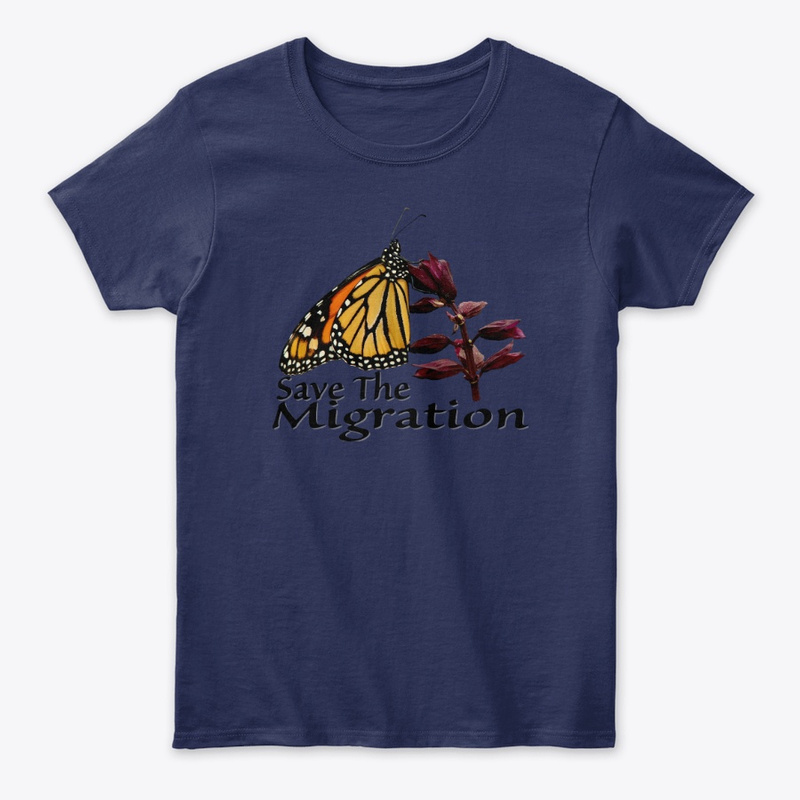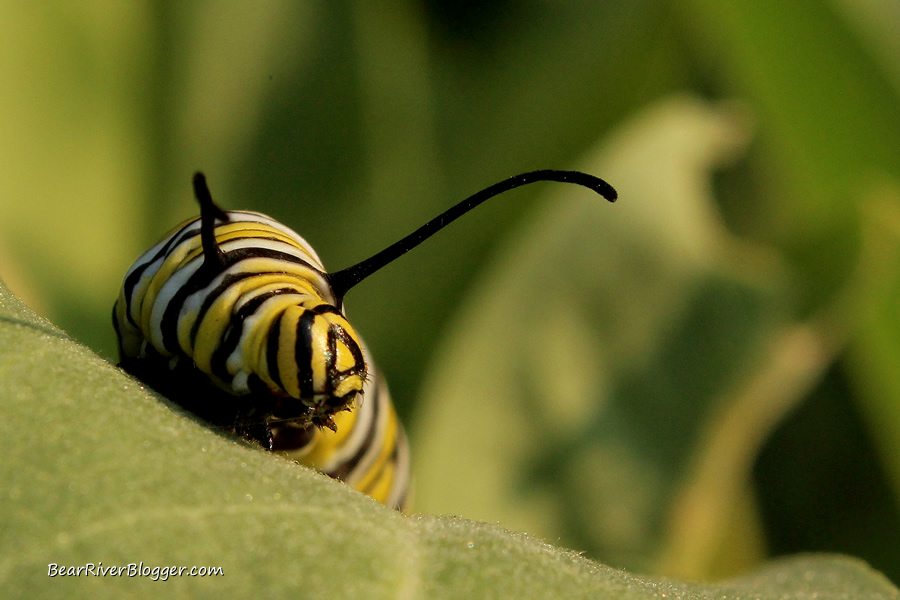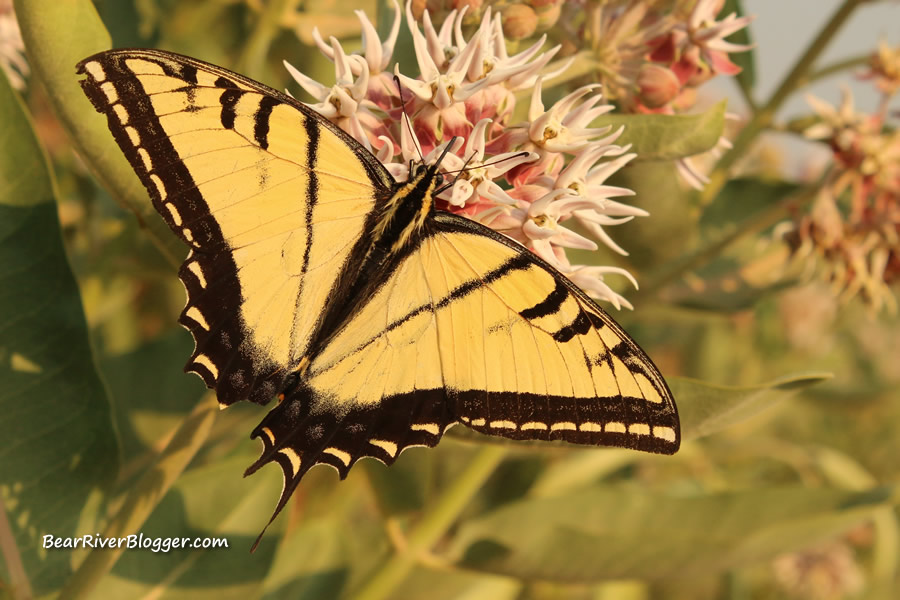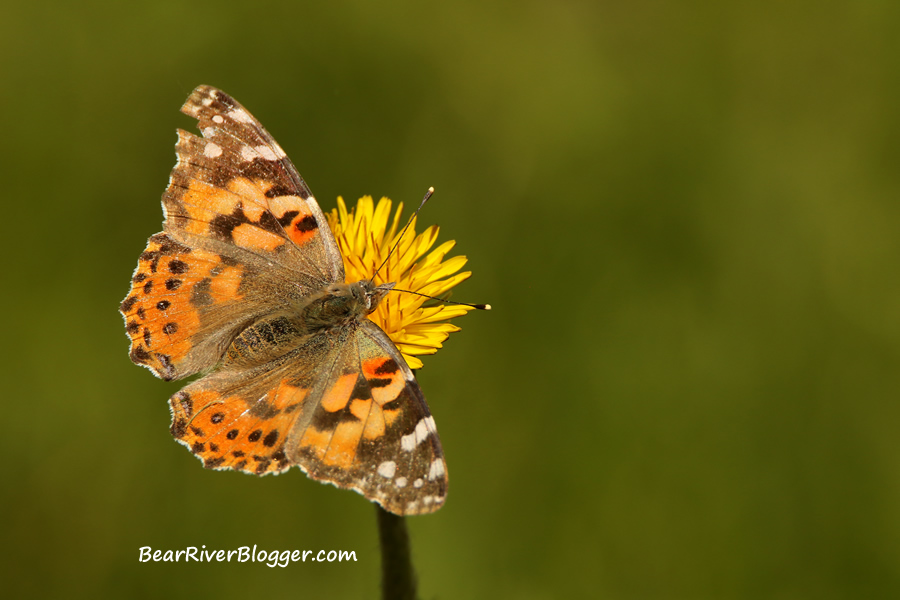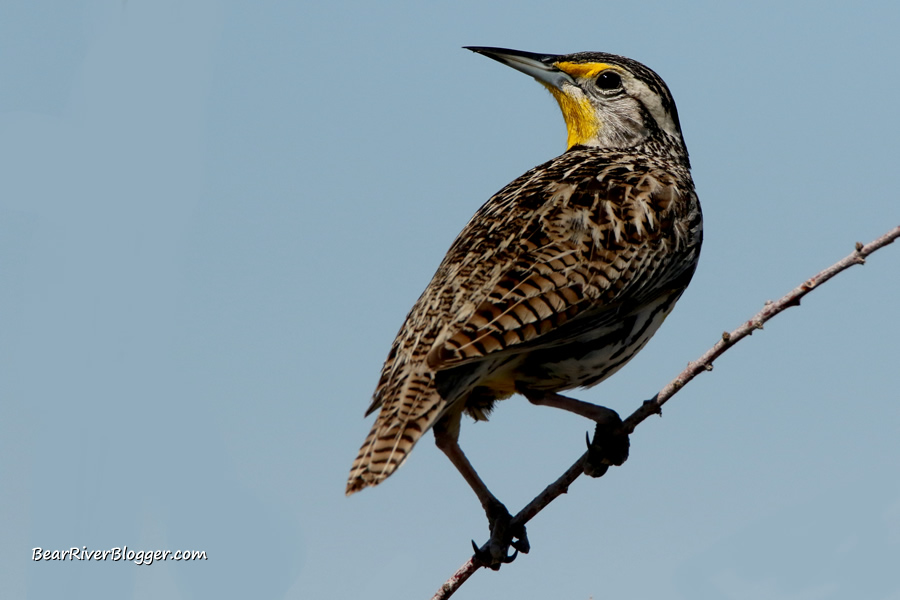I’ve been in full-blown monarch butterfly mode lately, and why not?
It’s late August and here in northern Utah, we are at the peak time for finding monarch butterflies, caterpillars, and eggs.
I’m observing monarch butterflies in my yard each and every day now, especially males patrolling my property as they fight over and guard valuable territory while looking for females to breed with.

Spend just 5 minutes watching them in the yard like I do each summer and you’ll agree that the monarch butterfly is such an incredible creature, one that definitely deserves our utmost admiration and attention.
As such, a huge part of that attention should entail planting both milkweed and nectar-producing plants where ever monarch butterflies are found in North America, including our own backyards if at all possible.
It’s no secret that milkweed is critical to monarch butterfly survival as it is the only plant this particular butterfly will lay their eggs on and the resulting caterpillars will eat.
Sadly, no milkweed literally means no monarch butterflies.
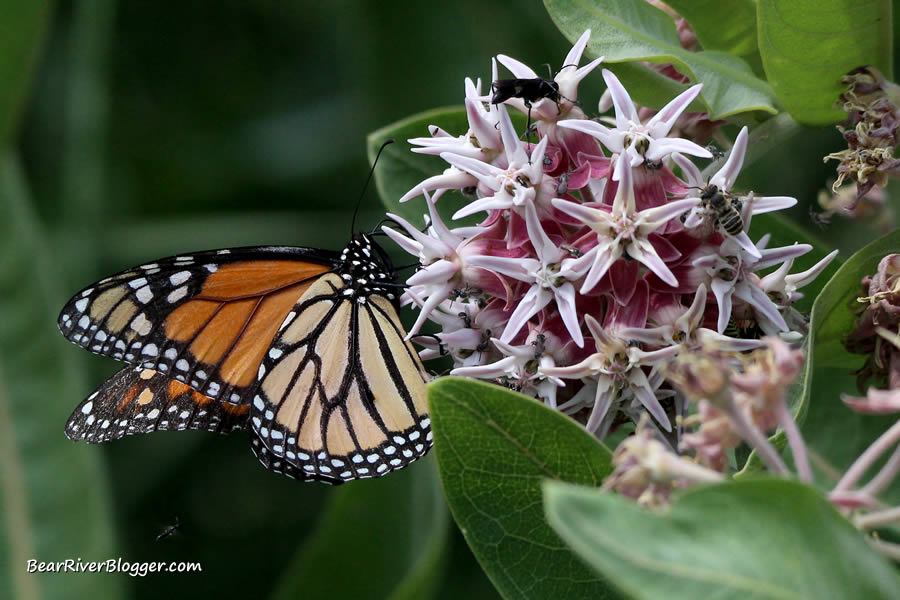
And what would summer be like without the beautiful monarch butterfly casually fluttering around our backyard gardens and flower beds?
I don’t know about you but when I see the first monarch of the year in my yard, I stop whatever it is I’m doing and enjoy this simple treasure that nature has sent hundreds of miles, sometimes thousands depending on where you live, to adorn our backyards with a little natural beauty for a few short months during summer.
Don’t get me wrong, however, I admit there are indeed many other important parts of the equation needed to save the monarch butterfly migration in North America.
But, realistically, any efforts that don’t centrally revolve around the monarch butterfly’s host plant, milkweed, will be an exercise in futility at best.
Another large chunk of attention we should give the monarch butterfly is to help participate in capturing, tagging, and releasing the last generation of monarchs each summer, the individuals that actually migrate to Mexico and southern California for the winter.
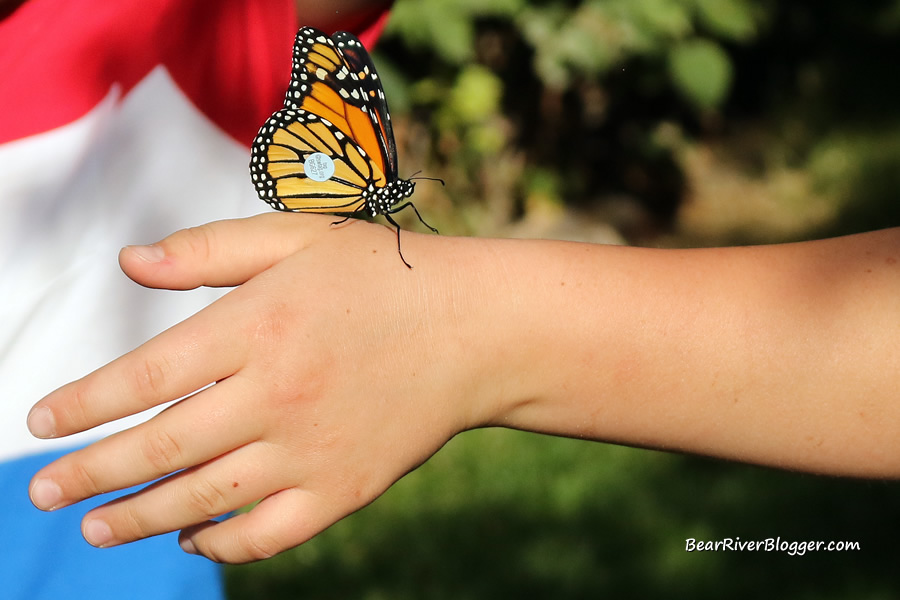
Tagging this last generation of monarch butterflies will help the ongoing efforts of determining migration routes and wintering areas for many regional populations that are still unknown to scientists.
Monarch butterfly populations, especially those out here in the western United States, have been decreasing at an alarming rate due to, in part, loss of habitat and pesticides.
Finding out their still unknown and hidden migration routes will help determine where more effort should be made for habitat protection and enhancement for the monarch butterfly.
It might not seem like much to some people but every single monarch butterfly that is tagged and observed later on somewhere else, anywhere else, in fact, during the migration is pure gold to biologists who are trying to piece together the mystery of monarch migration routes, literally one butterfly at a time.
But all of this hinges on finding both monarch butterflies and their caterpillars in the first place.
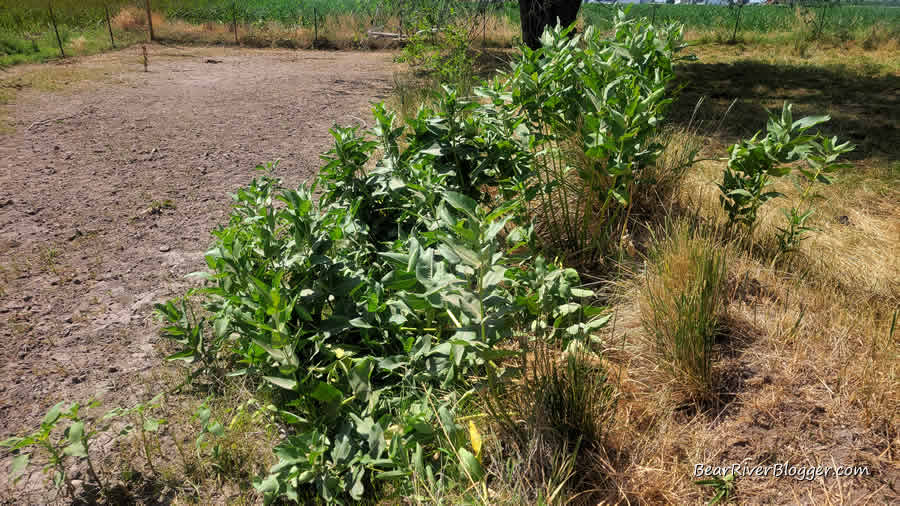
And if you have ever tried to find a newly hatched monarch butterfly caterpillar in a large stand of milkweed, you will know it can be like finding a needle in a haystack, especially out here in the west where monarch populations are currently struggling.
My efforts for finding monarch caterpillars have always been focused on checking large stands of showy milkweed that grow very commonly out here in some of the remaining agricultural areas in the far reaches of northern Utah.
In fact, I have a couple large stands of showy milkweed on my property and there are numerous large stands all around me along the country roadsides and edges of farm fields.
I even know places on the Bear River Migratory Bird Refuge and Farmington Bay WMA that currently have good-sized stands of milkweed growing as well.
(Side note, please keep in mind that state and federal wildlife refuges require permits to gather monarch eggs, caterpillars, and butterflies, including just tagging and releasing efforts so always check with the governing agency before any type of activity regarding milkweed, caterpillars, monarch butterflies or anything else wildlife related for that matter is undertaken.)
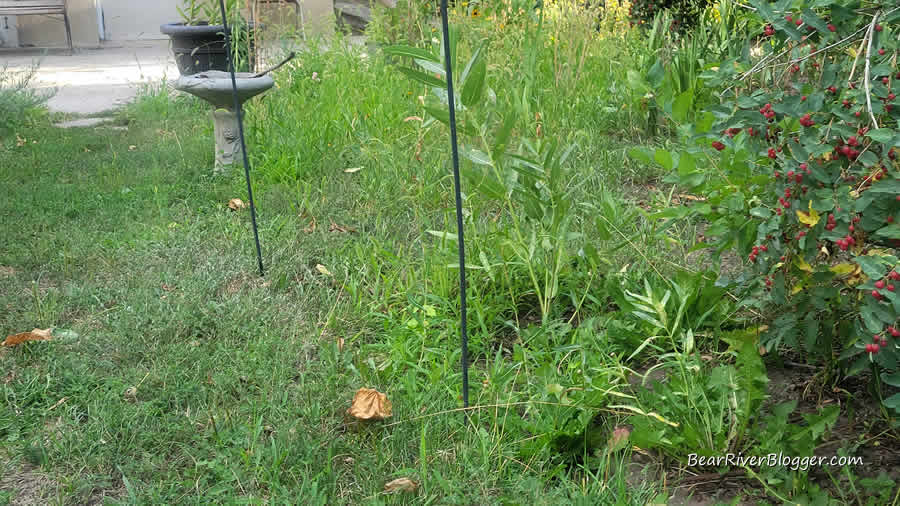
But sometimes finding monarch caterpillars in large, mature stands of milkweed isn’t as productive as we might hope for, something I was reminded of this very morning as I went out in my pasture to check for caterpillars.
My property has been growing milkweed wildly for about 8 years or so.
I say wildly because I never planted any of it to start, it just showed up one year on its own, and ever since I’ve been letting spread where ever it wants to go.
Needless to say, I have a couple large, mature stands of established showy milkweed but as it starts to spread all over my 1.3 acres, numerous small plants, newly emerging individuals and small stands alike, are starting to appear in a variety of new places in my pasture.
In years past, I never gave these small plants any consideration for eggs or caterpillars so, honestly, I never checked them for either.
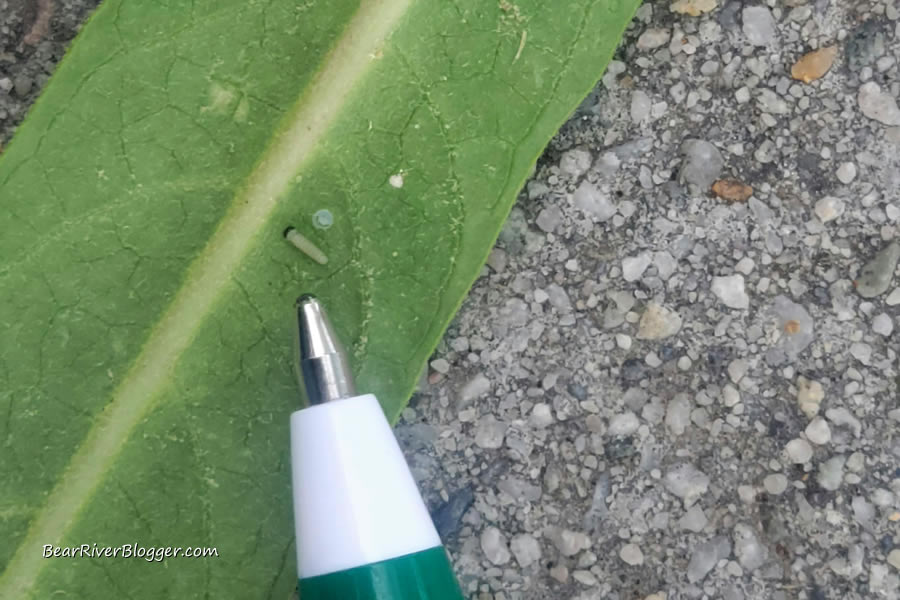
I always gave my attention to the larger, more full-grown stands of milkweed but with no success in finding caterpillars on my property.
These large stands have surely produced a lot of seeds but so far, none of my large milkweed stands have produced a single caterpillar that I know of.
It’s not that I haven’t found caterpillars on large, mature stands of showy milkweed before in other places, I have but just not consistently to any certain degree.
A few years ago, Todd Stout, a local butterfly expert, mentioned on one of his butterfly field trips female monarchs prefer to lay eggs on younger, fresher milkweed plants if at all possible, but I never gave it much thought until this year.
So, in my effort to find monarch butterfly caterpillars in my yard, the past few weeks I have been checking each and every milkweed plant I have, regardless of the size or if it is a solitary plant or in a stand of milkweed.
Between three family properties that have milkweed on them, so far I have found 9 monarch caterpillars and all of them have been found on smaller plants, some as little as 5 inches tall.
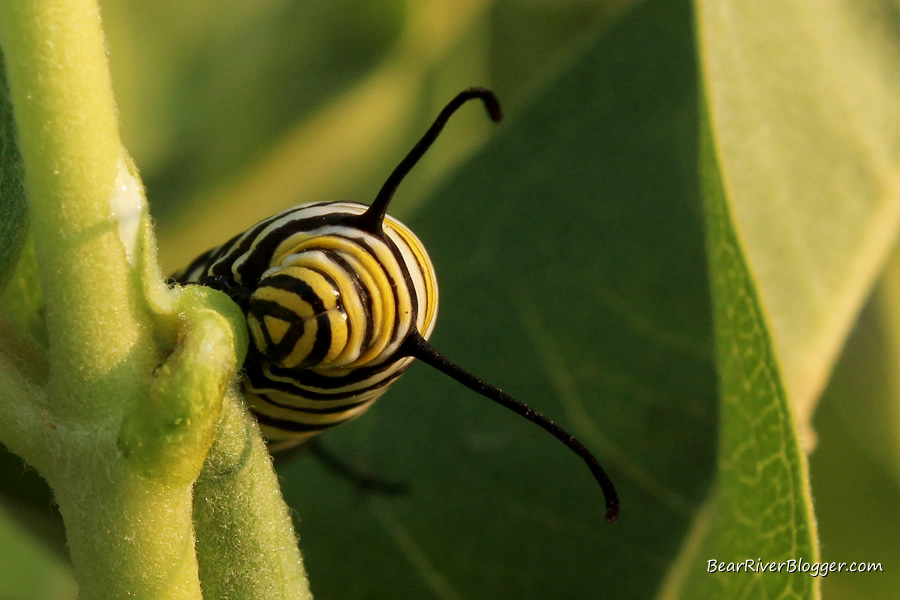
Last week, in fact, I watched a female monarch deposit an egg on a very small milkweed plant in my pasture, just a few short yards from my larger, more mature stands.
From what I am seeing firsthand, it seems to reason female monarchs do indeed prefer to lay their eggs on younger, fresh milkweed plants if at all possible.
Oh, I still check the larger stands of milkweed for caterpillars but I am also giving my attention to the smaller plants, solitary or not, when I go out in the pasture to check for monarch butterfly caterpillars.
(Look for monarch butterfly eggs and caterpillars on very small milkweed plants.
Don’t forget to subscribe to our Bear River Blogger YouTube channel for short nature clips such as this as well as periodic updates about the Bear River Migratory Bird Refuge.)
One thing I am noticing on the smaller plants and stands of milkweed is fewer spiders, earwigs, and other creatures that prey on monarch butterfly eggs and caterpillars are present.
If you stop and look at a large, mature stand of showy milkweed, for example, you might be shocked to see the diversity of creatures living on it and begin to wonder just how a monarch caterpillar survives this gauntlet of predation to adulthood.
Some of those creatures are harmless to monarch eggs and caterpillars, but some of them, most likely the variety of spiders and earwigs, as two examples, are most surely not.
I don’t know and it’s probably not anything science can confirm or deny but I wonder if female monarch butterflies instinctively seek out these smaller, younger milkweed plants to lay their eggs on whenever possible because the chance of predation on them is much less, at least from my observation that is.
Well, regardless of the reason, from my experience this summer, if you are out and about or in your own backyard searching milkweed for monarch butterflies, don’t overlook the small milkweed plants, even if they are only a few inches tall.
I am starting to find more and more monarch caterpillars, especially the smaller, newly hatched ones on milkweed plants 12 inches and under.

In fact, I went outside just now to check a few small stands of milkweed for caterpillars and I found 4 monarch butterfly eggs on a small group of very young milkweed plants and one of them was only about 5 inches tall.
Well, if you are a nature geek like I am, one who loves butterflies, birds, bees, dragonflies, and all the other creatures in nature, I offer you to head on over to our subscribe page and sign up for email notifications for future blog posts.
We also appreciate your readership for our website and offer you 20% off all items in our online store Bird Shirts and More with coupon code save20 as a thank you for your support of our website.
